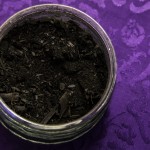
Just a housekeeping reminder: This coming week, I’ll be talking about Company for our Sondheim watch-along party and having some guest posts/featured comments/etc. So check it out on Netflix and let me know if you’d like to link up.
Last week’s links were all Olympic-themed, and I’ve got one more to add in that vein: Flowing Data has links to all of the NYT‘s best visualizations of track and field history at the Olympics. One of my favorites: looking at the fasted recorded times by kids in the 100m and seeing how far back in history you would have to go for that kid’s time to put him or her in medal contention.
This next video is not from an Olympic sport, but it seems at least as lovely as dyad synchronized swimming.
http://vimeo.com/46610799Not physically punishing enough for an Olympic sport, you say? Well, I’d read Scientific American’s excerpt from Francis Slakey’s To the Last Breath: A Memoir of Going to Extremes before you’re so quick to make a virtue out of enduring awfulness. He’s a physicist who climbed Everest, so he can describe the misery very precisely.
As a climber goes up even higher in altitude, into the so-called death zone, the dangerously thin air above 26,000 feet, there is so little oxygen available that the body makes a desperate decision: it cuts off the digestive system. The body can no longer afford to direct oxygen to the stomach to help digest food because that would divert what precious little oxygen is available away from the brain. The body will retch back up anything the climber tries to eat, even if it’s as small as an M&M.
The consequence of shutting down the digestive system is, of course, that the body can no longer take in any calories. Lacking an external fuel source, the body has no choice but to turn on itself. It now fuels itself by burning its own muscle—the very muscle needed to climb the mountain—at a rate of about two pounds per hour.
The climber’s body is now in total collapse. The respiratory system is working way beyond its tolerance at roughly four times above normal; the circulatory system is pumping at only 30 percent capacity; the digestive system has completely shut down; and the muscular system is eating away at itself. In short, the body is dying. Rapidly.
I still think you’d have to be crazy to do this. You should read the whole article, btw, and probably the book. (I’ve got it on hold at the library). In the excerpt, he has a terrifying bit about trying to convince his guide not to lie down and die on the mountain.
Ok, the connection to the next piece is just that it involves physical exertion and is terrifying (though I would argue also beautiful). From io9, a nature video about a spider that weaves nets and drops them on bugs.
I wouldn’t let the Curiosity landing go by without an interesting space link, don’t worry. Gizmodo has a story on how the Apollo program computers stored some data in rope loops, which had to be carefully woven. Check out the video below:
Oh, I think I’m pretty much required to link to this photo of what TYWKIWDBI describes as a “travelling ‘preacher-scientist.'”
You can find out what on earth is going on at the link.
For more Quick Takes, visit Conversion Diary!














